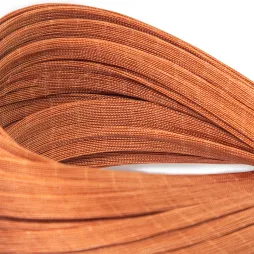Which tire is more durable, a "single-ply sidewall" or a "double-ply sidewall"?
The differences between "single-ply sidewalls" and "double-ply sidewalls" have appeared in many articles in automotive media. It's generally believed that a "single-ply sidewall" is less durable than a "double-ply sidewall." But is this really the case?
Discussing the "tread" and "sidewall" from the anatomy of a tire
Let's start with the anatomy of a tire! First, we'll divide a tire into two main areas. The area of the tire that contacts the road is called the "tread." The side of the tire is called the "sidewall." There are actually other areas like the "shoulder" and "bead," but these are too technical for us to delve into today.
The outermost black rubber visible to the naked eye is the outermost layer of a tire. Some people think tires are made solely of rubber, but this isn't the case. If we were to cut open a tire, we'd see its multi-layered structure. It's a complex structure, made of more than just rubber.
A complete analysis of tire structure!
First, let's look at the "tread." Let's go through the tire layer by layer, starting from the outside in. First, hidden beneath the black rubber is the cap ply, typically made of nylon. Its function is to maintain the tire's shape and prevent it from losing its shape. Further in, beneath the cap ply is the belt ply. It's typically made of two layers of steel wires, interwoven to form a web. This is the hardest and strongest part of the tire. It's the key structural layer that protects the tire from potholes and road hazard. Continuing deeper, beneath the steel wire layer is the cord ply! The cord ply, commonly known as the "cord fabric," forms the basic skeleton of the tire. How can tires withstand the weight of several tons of a vehicle? How can they withstand the pressure of high-pressure air? It's because of this! As we know, balloons are made of rubber. When we blow up a balloon, the gas gets bigger and bigger, eventually exploding. This is because rubber is elastic, and when we blow air into it, it naturally expands. But tires can't do that! Tires need to withstand loads and high pressure, so they need to be incredibly strong! What can we do? The "cord ply" is the answer! It's the rubber's skeleton.

Cord ply: The true core of the tire's skeleton!
The "cord ply" is typically made of polyester (also known as "Dacron") or rayon. The former is common in regular tires, while the latter is more common in run-flat tires (commonly known as run-flat tires). Dissecting the tire's "tread" structure reveals these components.
Next, let's move on to the side of the tire, the "sidewall," to see what's hidden within the rubber. Inside the "sidewall" rubber is just the "cord ply." In fact, the so-called "single-ply sidewall" and "double-ply sidewall" are different. It's the "cord ply"!
Is a "single-ply sidewall" more fragile than a "double-ply sidewall"? That's what people say.
According to popular belief, tires with "single-ply sidewalls" are less sturdy than those with "double-ply sidewalls," and are more susceptible to damage when encountering potholes or uneven roads. So what's the truth?
We know that "cord ply" is commonly known as "cord fabric." It's actually made up of individual "cords" woven together. The biggest difference between a "single-ply sidewall" and a "double-ply sidewall" is the thickness of the cords!
Is a "single-ply sidewall" more fragile than a "double-ply sidewall"? What's the truth?
A "double-ply sidewall" has two layers of cord, one on top and one on the bottom. While a "single-ply sidewall" only has one layer of cord, the cord is incredibly thick! Almost twice as thick as a "double-ply sidewall"! To put it bluntly, is there any fundamental difference between "two 50-yuan bills and one 100-yuan bill"? Of course, a "double-ply sidewall" also has its advantages: because it has two layers of tire cord fabric, staggered left and right, it takes up more space and requires more rubber to accommodate the cord fabric.
This results in tires with a "double-ply sidewall" being slightly thicker. Furthermore, the spacing between the cords is also closer, resulting in a denser carcass. Therefore, in actual use, tires with a "double-ply sidewall" tend to be more adaptable on poorer road surfaces.


